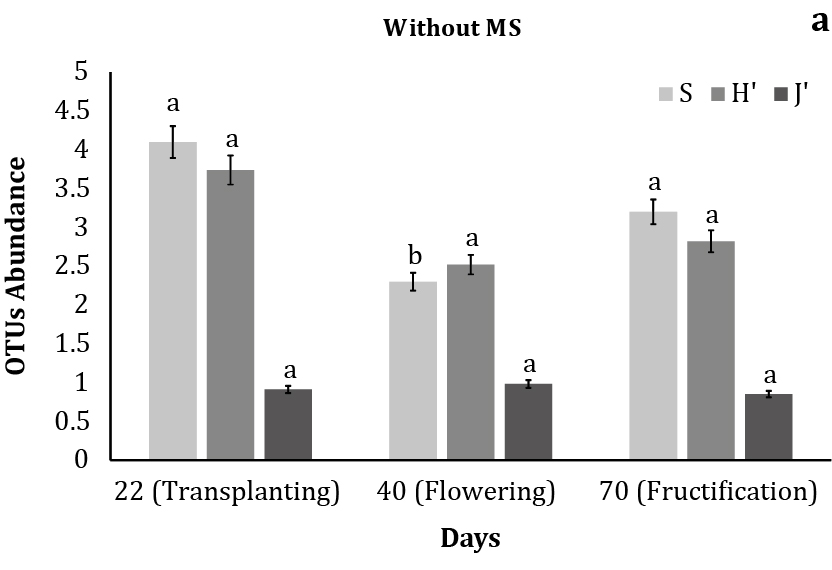Sodium N-methyldithiocarbamate impact on soil bacterial diversity in greenhouse tomato (Solanum lycopersicum L.) crop
Palabras clave:
biodiversity indexes, soil, T- RFLP, bacterial communityResumen
The constant use of sodium N-methyldithiocarbamate (metam sodium: MS) in protected agriculture in México has attracted the attention of researchers and producers on their effects on the environment. The objective of this study was to evaluate the impact of MS on the bacterial community structure in an agricultural soil with tomato crop (Solanum lycopersicum L.) considering the different phenological stages of the crop. The experiment was carried out in a greenhouse, with a completely randomized block design with two treatments: 1) without MS and 2) with application of 400 L·ha-1 of MS. For the determination of the bacterial structure, the biodiversity indexes of richness (S), diversity (H') and equity (J'), identification of operational taxonomic units (OTU) were used through the T-RFLP technique. Application of MS in soil showed no significant effect on bacterial richness. However, the application of MS does alter the structure of the bacterial community (H' and J') in each of the tomato phenological stages. Finally, future studies which include the evaluation of the effects of MS on the physiology of intensive crops and functions in the different soil types are need.
Descargas

Descargas
Publicado
Cómo citar
Número
Sección
Licencia
Aquellos autores/as que tengan publicaciones con esta revista, aceptan las Políticas Editoriales.










.jpg)




